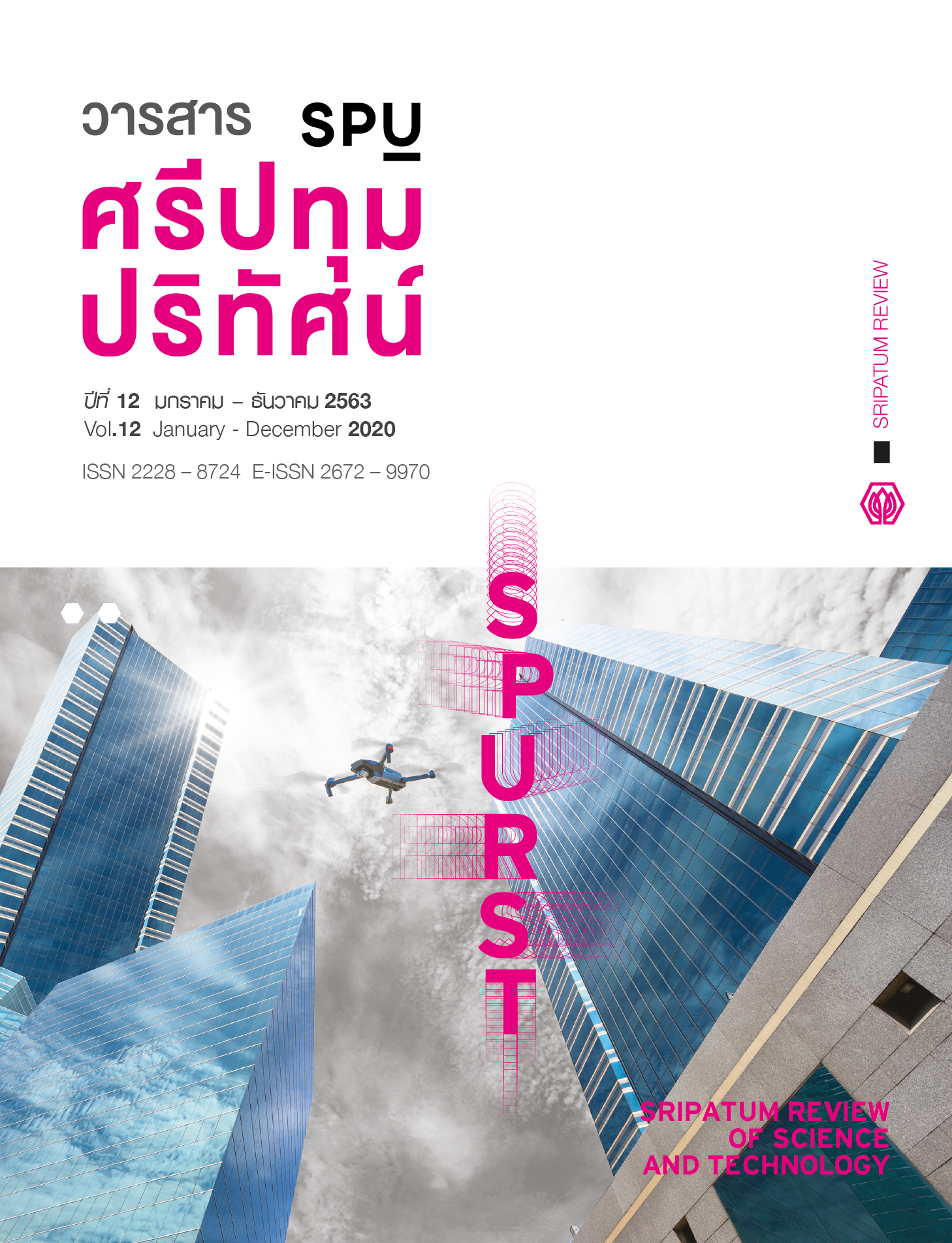The Development of Metrics and Indicators of Level for Smart and Sustainable Digital Rajabhat Universities
Main Article Content
Abstract
This research aims to develop measures and level indicators for smart and sustainable digital Rajabhat universities. This research is a quantitative research which uses closed-ended questionnaires. There are 4 steps in the research as follows: Step 1 is the use of research sample consisting of administrators and lecturers from 38 Rajabhat universities in Thailand for finding the measures and level indicators by conducting t-test to select appropriate indicators which are those that have rating means of 3.50 or over. Step 2 is the use of research sample consisting of internal educational quality of the educational institution to confirm the measures and the level indicators with the use of t-test. Step 3 is the use of confirmatory factor analysis to select the measures with .30 or higher factor loading. Step 4 is the test of goodness-of-fit od the measures with empirical data. Research results show that 5 measures and 25 level indicators have been obtained.
Article Details
References
Charmondusit, K. (2019). The paradigm shift in organizational management of higher education institutions to accommodate changes in the 21st century. [Online]. Retrieved December 5, 2019, from: https://old.mahidol.ac.th/th/latest_news58/ Sustainable-University/sus-u.pdf. (in Thai)
Deloitte. (2018). Digital Maturity Model Achieving digital maturity to drive growth. [Online]. Retrieved March 23, 2020, from: https://www2.deloitte.com/content/dam/Deloitte/global /Documents/Technology-Media-Telecommunications/deloitte-digital-maturity-model.pdf
International Telecommunication Union. (2016). The ICT Development Index (IDI): conceptual framework and methodology. [Online]. Retrieved March 23, 2020, from: https://www.itu.int/en/ITU-D/Statistics/Pages/publications/mis/methodology.aspx
Kanok, O. (2013). A Development of ICT Competency Indicator Model for Faculty Member in Institute of Physical Education Thailand. Thesis of the Degree of Doctor of Philosophy Program in Information Technology. Bangkok: Sripatum University. (in Thai)
Kidjaideaw, S., Praneetpolgrang, P. and Jirawichitchai, N. (2017). Developing Standards framework of Measurement and Indicator for Smart Rajabhat Universities in Thailand. The Proceedings of the 9th National Conference on Information Technology, 1-2 November 2017 at Mahidol University (Salaya Campus), 348-353. (in Thai)
Madakam, S. and Ramaswamy, R. (2014). Smart Cities - Six Dimensions. The Proceedings of the International Conference on Advances in Computing and Information Technology, 4-5 January 2014 at Bangkok Thailand, 38-41.
Olsina, L., Dieser, A. and Covella, G. (2014). Metrics and Indicators as Key Organizational Assets for ICT Security. Emerging Trends in ICT Security, 2014, 25-44.
Orlowski, A. and Romanowska, P. (2019). Smart Cities Concept: Smart Mobility Indicator. Cybernetics and Systems, 1–13.
Pinyo, T. (2012). Composition analysis techniques for research. Bangkok: Fern,kalaung Printing and Publishing. (in Thai)
Pressman, R. S., and Maxim, B. (2014). Software Engineering: A Practitioner's Approach (8th ed.). New York: McGraw-Hill.
Poovarawan, Y. (2016). Grand Challenges in Digital University. Suranaree Journal of Social Science, 10(2), 171-188. (in Thai)
Smyth, K., MacNeill, S. and Johnston, B. (2015). Visioning the Digital University – from institutional strategy to academic practice. Educational Developments, 16(2), 13-17.
Thongiam, B., (2018). The Development of Indicators for Digital Literacy Skills of Teacher Students in Unlimited Admission University. Journal of Suvarnabhumi Institute of Technology (Humanities and Social Sciences), 4(1), 291 – 302. (in Thai)
Tikhomirov, V. (2015). Development of strategy for smart University. The Proceedings of Open Education Global International Conference 2015, 22-24 April 2015 at Alberta Canada, 434–436.
Yamane, T. (1973). Statistics: An Introductory Analysis. (3rd ed). New York: Harper & Row.

